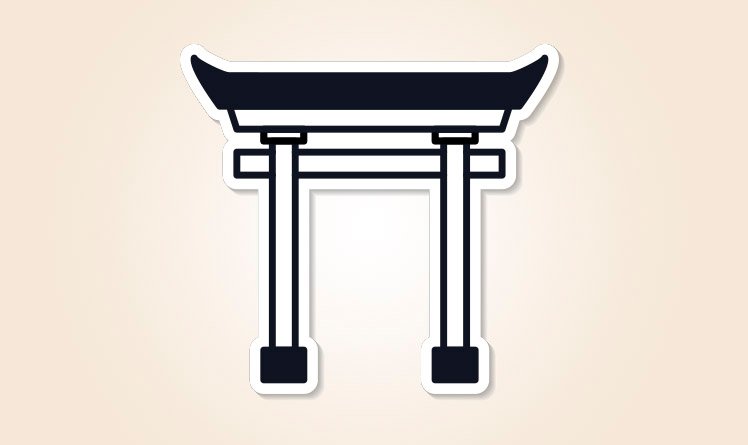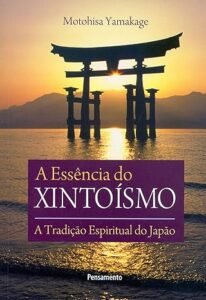Shintoism: what is the traditional spirituality of Japan?

|
Getting your Trinity Audio player ready...
|
Amidst the vibrant hustle and bustle of Japan’s metropolises and the contemplative serenity of Zen gardens lies an ancient tradition that has shaped the soul of the country: Shintoism. More than a religion, Shintoism is a philosophy of life deeply rooted in reverence for nature, respect for ancestors and the search for inner harmony.
In this article, we will explore what Shintoism is, its origins, beliefs, rituals, and its influence on Japanese culture.
What is Shintoism?
Initially, Shintoism is the native religion of Japan, with roots that go back centuries before the arrival of Buddhism in the country.
Furthermore, Shinto, or “Way of the Gods” in Japanese, unlike many Western religions, has no founder, sacred scriptures, or rigid dogma. Instead, it is a spiritual practice based on reverence for kami, spirits or deities that inhabit all things, from great mountains to small rocks.
“Shinto is the native religion of Japan, based on reverence for nature, ancestors, and kami (spirits that inhabit all things), without a founder or sacred scriptures.”
Origins and history of Shintoism
The exact origins of Shinto are uncertain, but its roots are believed to date back to prehistoric Japan, when the ancestors of modern Japanese people practiced rituals and worship of nature spirits. The word “Shinto” was not coined until much later, after the arrival of Buddhism in Japan in the 6th century.
Over the centuries, Shintoism evolved and intertwined with other influences, such as Buddhism and Confucianism, forming a rich spiritual tradition unique to Japan. This partial fusion with Buddhism occurred during the Heian period (794–1185), creating a religious syncretism that persists to this day.
Fundamental principles and beliefs
Shintoism offers a philosophy of life based on values that promote individual well-being and harmony with the world around them. These principles guide the actions and attitudes of adherents, serving as a guide for a full and meaningful life.
Kami: the spirits and deities of Shintoism
At the heart of Shintoism are the kami, spirits and deities that inhabit nature, the elements, ancestors, and even objects and places. These kami are seen as powerful and sacred forces that must be respected and honored through rituals and offerings. Despite this, they are not anthropomorphic gods as in other religions, but rather representations of vital forces and the essence of existence.
Some of the best-known kami include Amaterasu, the sun goddess, and Inari, the deity of fertility and agriculture.
“The kami in Shintoism are spiritual forces that inhabit elements of nature, ancestors and even objects, being venerated as manifestations of the sacred.”
Living nature: from anciently wise trees to majestic mountains
Japan's natural beauty is considered to be the physical manifestation of the Kami. Ancient trees exude ancient wisdom, waterfalls represent purification and strength, and imposing mountains symbolize greatness and permanence.
Honored Ancestors: The Invisible Lineage That Unites Us
Ancestors are also revered as Kami, as they are seen as part of the spiritual lineage that connects us to the past and the future. Thus, honoring them through rituals and offerings means recognizing the wisdom and strength that we have inherited from previous generations, strengthening family ties and cultural identity.
Mystical beings: Dragons, Phoenixes and Yokai inhabiting folklore
Japanese folklore is rich in stories of mystical creatures such as Dragons, Phoenixes and Yokai (nature spirits). These entities, often portrayed as fantastical or even monstrous beings, represent the many faces of the natural world, from its serene beauty to its wilder and more unpredictable aspects.
Reverence to nature
Above all, nature occupies a central place in Shintoism. In this sense, mountains, rivers, trees and even rocks are considered sacred, and are inhabited by kami. This reverence for nature promotes a harmonious relationship between humans and the natural world.
“For Shinto, nature is sacred—mountains, rivers, trees, and rocks are the homes of the kami and must be respected as divine expressions.”
Purification and rituals
One of the fundamental concepts of Shinto is purity. Purification practices such as washing one's hands and rinsing one's mouth before entering a shrine are common. Spiritual pollution, or kegare, must be avoided in order to maintain harmony with the kami. Other common rituals include prayer, making offerings, and participating in festivals and celebrations.
“Purification (harae) is central to Shintoism and seeks to eliminate spiritual impurity, restoring harmony with the kami through rituals involving water, prayers, and offerings.”
Festivals and celebrations
Shinto is marked by a series of festivals and celebrations throughout the year, each with its own history and meaning. The best-known are the Japanese New Year, Matsuri (local festivals) and Obon, a festival in honor of ancestors. At these events, practitioners gather to honor the kami, perform rituals and celebrate their connection with nature and community.
A philosophy of life in balance
Wa 和(Harmony): the search for balance
One of the central principles of Shintoism is “Wa”, which represents the search for balance and harmony in all aspects of life. Thus, this translates into mutual respect, the peaceful resolution of conflicts and the constant search for a state of inner serenity.
Magokoro まごころ(Sincerity): authenticity as a fundamental pillar
A fundamental value in Shintoism is “Magokoro,” which means “sincerity of the heart.” Therefore, acting with sincerity and authenticity in all situations, expressing your genuine feelings and true thoughts, is essential to building authentic relationships and living in peace with yourself and the world.
Harae 祓 (Purity): physical and spiritual cleansing for renewal
Purification, both physical and spiritual, is an important concept in Shintoism. Through rituals such as washing with water and making offerings, adherents seek to rid themselves of impurities and renew their energies, preparing themselves for connection with the Kami and a more fulfilling life.
Gisei 犠牲 (Selflessness/Sacrifice): Generosity and Altruism in Action
“Gisei” means “selflessness” and refers to the willingness to put the needs of others before one’s own. Above all, in Shintoism, it is believed that acting with generosity and altruism, seeking the well-being of others, contributes to community harmony and individual happiness.
“Shinto values harmony (Wa), sincerity (Magokoro), purity (Harae) and altruism (Gisei) as pillars for a full and balanced life.”
Rituals and Practices
Visits to the sanctuaries
Visiting Shinto shrines is a common practice in Japan. Believers go to shrines to offer prayers, make requests, and participate in purification rituals. Each shrine is dedicated to one or more specific kami.
Shinto shrines are sacred places where kami are worshipped. They usually include a series of structures, such as the torii (gateway), honden (main hall), and haiden (offering hall).
Some shrines are particularly famous, such as Ise Shrine, dedicated to the goddess Amaterasu, and Fushimi Inari Shrine, known for its thousands of torii gates.
Matsuri: Shinto festivals
Festivals, or matsuri, are important celebrations in the Shinto calendar. They vary from region to region, but generally include parades, dancing, and rituals designed to honor the kami and ensure good harvests and prosperity.
Purification
As mentioned above, purification rituals are crucial in Shinto. Purification can be physical, such as washing in a river, or symbolic, such as passing through a torii (gate) to enter a shrine.
Shintoism in popular culture
Shintoism has had a profound influence on Japanese literature and film. In this way, works such as “Spirited Away” and “Princess Mononoke” explore Shinto themes of spirituality and nature.
Likewise, Shintoism is also present in anime and manga, with many stories incorporating kami, Shinto rituals, and shrines as central settings and themes.
Shintoism in Modern Japan
Shinto continues to influence modern Japanese culture, from traditional rituals to everyday practices. It is an integral part of New Year celebrations and weddings, for example.
Furthermore, many Japanese people today practice Shintoism in a syncretic way, combining it with other religious traditions. Thus, contemporary Shintoism focuses on the continuity of traditions and connection with nature.
Above all, its values of harmony with nature, respect for ancestors and emphasis on community are reflected in many aspects of society, from traditional architecture to martial arts and cooking.
Likewise, Shintoism's deep integration with nature and its animistic vision leads practitioners to revere and care for the environment as an extension of the sacred.
Shinto also plays an important role in Japanese family structure. For example, ancestors are revered as kami, and the family is seen as a sacred unit to be preserved and honored. Rituals such as Obon, which honors ancestors, reinforce these family ties and generational continuity.
In short…
Shintoism is a rich spiritual tradition deeply rooted in Japanese culture and history. This philosophy invites us to value nature, seek harmony, and respect the spirits that inhabit our surroundings. Understanding this spirituality offers us new insights into how we can connect with the universe.
Despite the social and cultural changes that Japan has faced over time, Shintoism remains essential to the lives of the Japanese people and to the formation of their national identity. Above all, its animistic perspective, connection with nature, and appreciation of community and ancestors provide a unique and meaningful vision in an increasingly globalized and individualistic world.
As global interconnectedness increases, Shinto has the potential to foster a greater appreciation for spiritual and cultural diversity. Its holistic approach and respect for nature offer valuable insights into addressing the environmental and social challenges of the 21st century.
FAQ – Questions and Answers about Shintoism
1. What does the word Shinto mean?
Shintoism comes from Japanese Shintō, which means "Way of the Gods." It is the traditional religion of Japan, focused on reverence for nature and ancestors.
2. Who are the kami in Shinto?
Kami are spirits or divine forces that inhabit natural elements, such as mountains, rivers and trees, as well as ancestors and sacred objects.
3. Does Shintoism have scriptures or a founder?
No. Unlike other religions, Shintoism has no sacred scriptures or founder. It is a practice based on rituals and oral traditions.
4. What are the main rituals of Shintoism?
Among the main ones are water purification rituals, offerings to the kami and festivals (matsuri), which celebrate nature and the community.
5. What is the importance of Shintoism in current Japanese culture?
Even in modern, technological Japan, Shintoism remains present in festivals, weddings, New Year's Eve, and in relationships of respect for nature and ancestors.
Recommended reading:
The Essence of Shinto: Japan's Spiritual Tradition
Images: Freepik
Article originally published on 07/08/2024 and updated on this date

Marcel Castilho is an expert in neuromarketing, neuroscience, mindfulness and positive psychology. In addition to being an advertiser, he also has a Master's degree in NLP – Neurolinguistic Programming. As the owner and founder of the communications agency VeroCom and also of the digital agency Vero Contents, he has been studying human behavior for over 30 years.


